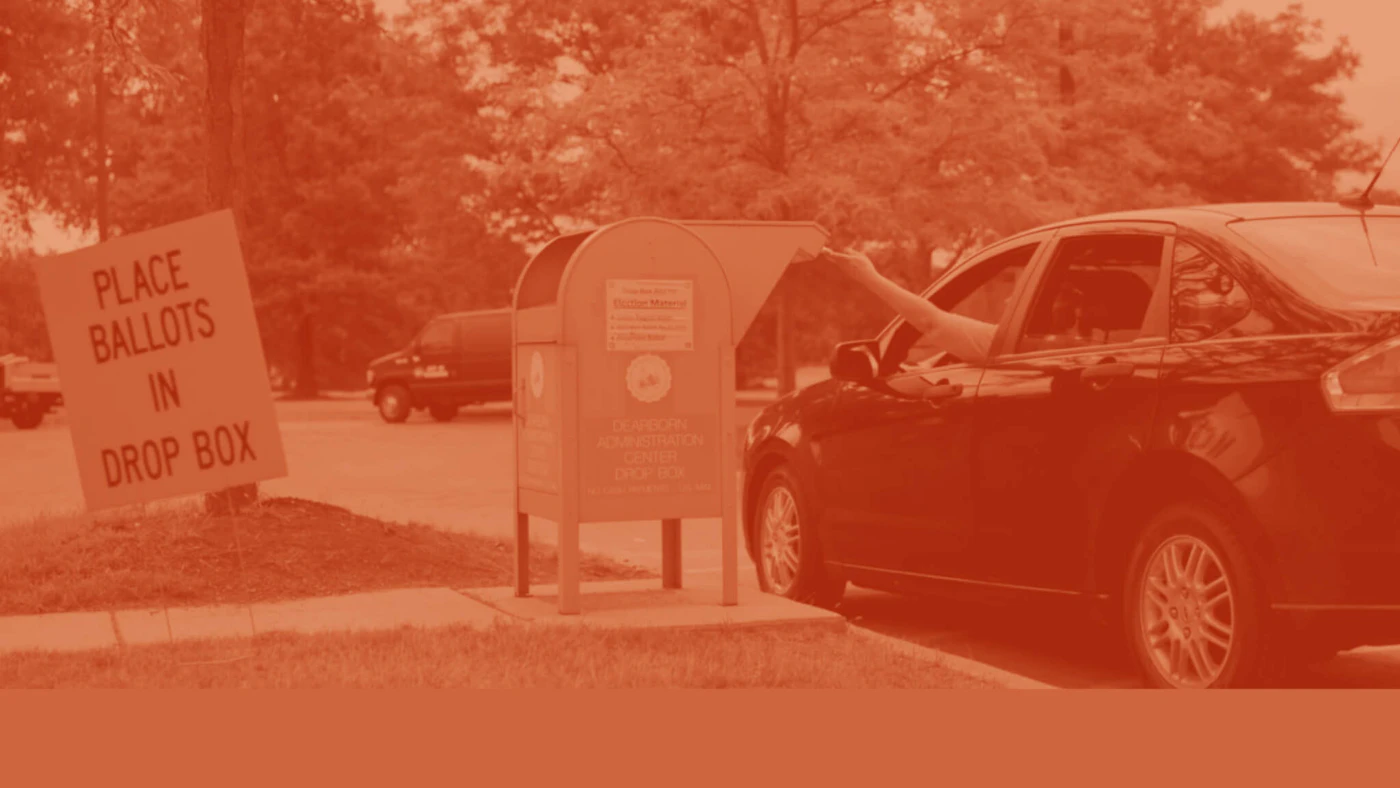When elections for offices at the local level aren’t filled out in ballots, it’s called “ballot roll-off,” and voting by mail helped Michiganders avoid it in August primary.
This article is part of COURIER’s Your Vote 2020 hub. For more stories from each of the battleground states, along with national reporting, visit the site here.
ALLEGAN, MI — Samantha Broadbent voted by mail in August’s primary election. She wasn’t used to the process, but she was grateful for the option. Both for convenience and because it gave her access to more information.
“It was different because I had to send out a request to get my ballot for the August and November election which was weird, and then it was mailed to me about a week later,” Broadbent told The ‘Gander. “I opened it and there was the envelope it came in, the secrecy envelope and then my ballot which I did on my couch and then I just put it in the mail. I did like it. There was no standing in line … and for someone like me who doesn’t always have transportation to get to the polling place it was great to have that as an option.”
RELATED: WATCH: How Michiganders Broke Records With Absentee Ballots This Historic Primary
But one of the major advantages to voting from her couch was that Broadbent was able to do her research with her ballot in front of her. She was able to look up candidates she wasn’t as familiar with and cast the most informed ballot possible.
“It did give me more time to look over the candidates and make a more informed decision,” she said.
Broadbent will be voting by mail again in November in part because of the convenience, in part because of concerns about the coronavirus and in part because of that extra chance to do her research. And she’s not alone in that.
Absentee voters accounted for an amazing proportion of the turnout in Tuesday’s primary and also accounted for the lion’s share of the votes in local elections across Michigan in May. Both those elections shattered turnout records. And data published by Lake Effect suggests most Michiganders intend to vote absentee in November as well.
What’s Ballot Roll-Off?
Those voters, like Broadbent, will have the chance to be more informed than ever.
“I think in previous elections I would vote confidently on the more widely known things like president [or] governor,” Tyler Haney from Warren told The ‘Gander. “The more local things always felt very unknown usually.”
SEE ALSO: ‘Secure, Proven, Safe’: Michigan City Clerks Weigh In On Record Absentee Requests
That leads to a problem called “ballot roll-off”, where voters tend to leave the more local or specialized races blank, or vote based purely on a candidate’s name. This is because a lot of voters like Haney don’t have knowledge about candidates in smaller, more local races. For Haney, mail-in voting let him address that lack of information that often contributes to that roll-off.
“I looked up the different candidates on their websites — through Twitter and Facebook too,” Haney said. “I liked being able to really see what they stood for and who endorsed them. Also to see what people across social media thought of those candidates was a good way to see maybe some of the less polished things about them.”
Mail-in Voting Works to Address Roll-Off
Combatting roll-off with mail-in voting isn’t a new idea. A Stanford study proposed it in 2015. The study looked at election data from the state of Washington, which transitioned to an all mail-in voting system in 2011. The study found that as voting by mail became required, voters were more likely to complete their entire ballot.
UP NEXT: How Michigan’s Tuesday Primary Election Crushed Turnout Records
“People like voting by mail,” former Washington Secretary of State Sam Reed is quoted as saying in the study. “Most importantly, a voter spreads the ballot out across the kitchen table and really studies the issues and candidates.”
That becomes even easier with technology. Sites like Ballotpedia, OnTheIssues and news sources can help voters become more informed on candidates and ballot initiatives, and programs like BallotReady synergize particularly well with voting from home.
With higher than ever turnout in Michigan elections, if the Stanford study holds true in November local officials, judges and other down-ballot races will have a kind of voter engagement they’ve never seen before.





